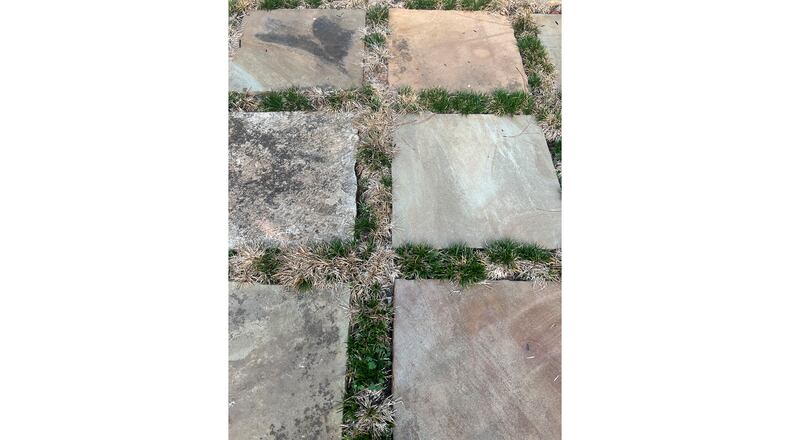Q: I have had dwarf mondo between my steppingstones for over 15 years. This year, it’s dying. Is that from the extreme heat Susan Wood, email
A: I think the problem is heat that dried out the soil. During the day, you have sunlight drying everything out. The steppingstones would hold heat far into the night as well. Clay soil holds and transfers heat better than loose, sandy soil. One way to proceed would be to use a narrow trowel to pull up the remaining mondo grass. Put the plants in the shade and spray with water to keep them cool and moist. Where plants were, dig trenches 8 inches deep. Into a wheelbarrow or concrete mixing tub place two parts (by volume) of existing soil, one part perlite and one part potting soil. Mix thoroughly and fill the trenches 6 inches deep. Use the remaining mixture to plant and fill in around your mondo grass plants. Make sure the soil is level with or slightly above the level of the steppingstones so rainwater isn’t directed into the trenches, where it might drown the plants.
Q: I need a source for a male holly companion for my 10-year-old Emily Bruner hollies. They bloom their hearts out and the bees love them, but there are never any berries. James Swan is listed as the male pollinator. I’ve looked all over for a James Swan, to no avail. What other hollies might work? Betty Elko, Virginia
A: Since Emily Bruner is a hybrid cross between Ilex latifolia and I. cornuta, if you can find a male of either species that blooms at the same time, you should get results. I. cornuta male hollies are rare, but I. latifolia ‘Blue Prince’ or ‘China Boy’ might work. A great source to answer your question is the Holly Society of America (hollysociety.org). Reems Creek Nursery has a nice guide to holly pollination at bit.ly/hollypoll.
Q: My wife was given a red oak by her coworkers. We dug a 2-foot-wide hole, dropped it in and filled in with top soil. The tree is not doing very well and only has about 20 leaves left. What do you suggest we do? Brian Wolfe, email
A: I think you need to decide whether to replace the tree. Red oak does not tolerate dry roots. The leaves tell us that happened. If you want to experiment, dig it carefully out of the ground and soak the roots for 24 hours. Gently unwind the roots, and spread them in the new wide hole you dug in the meantime. Backfill with native soil, making sure the trunk/root collar is level with the surrounding soil surface. Mulch with hardwood arborist chips and cross your fingers tightly.
Email Walter at georgiagardener@yahoo.com. Listen to his occasional garden comments on “Green and Growing with Ashley Frasca” Saturday mornings on 95.5 WSB. Visit his website, walterreeves.com, or join his Facebook page at bit.ly/georgiagardener for his latest tips.
About the Author
Keep Reading
The Latest
Featured


